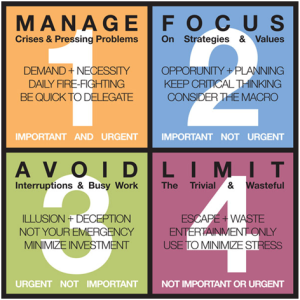So, here’s how it works:
You start a site, grow a mailing list, and then your loyal fans contact you for freelance work. The money comes in.
At least, that’s supposed to be what happens.
But what if your readers and your clients are two completely different people? Strangely, your clients never seem to come from your email list.
When I first started a mailing list in a previous niche, I assumed that growing a list meant I could pluck most of my clients from my list. But I started noticing that some people who emailed me for help weren’t readers. The vast majority of readers weren’t clients either.
All seemed fine and well, except for the fact that I started to wonder whether I was being productive with my time when it came to writing blog posts.
If you’re in this situation, don’t despair. It happens more often than you think.
But before we get to the remedy, let’s get to the heart of the issue first:
Why does it matter that your clients aren’t the same as your readers?
At first, it seemed nice that people passing by my website were interested in my services. But over time, I noticed a difference between clients from drive-by traffic and those who were loyal readers.
People who weren’t readers would ask for help, I would deliver, and in a flash, they were gone. They may have come back for extra help, but it was sporadic and had a transactional feel.
On the other hand, regular readers who were also clients would be more likely to reach out on a periodic basis and keep in regular contact. The tone of their communication was friendlier and felt more collaborative.
So while it’s nice to get business from drive-by traffic, email is still the best way to get loyal readers to become long-term clients. Readers trust you enough to let you into their inbox, which means they know their views are aligned with yours and you’re a familiar name.
Drive-by traffic, on the other hand, tends to attract clients that are looking for immediate help. They don’t get frequent reminders from you in the form of blog updates, and most likely don’t feel about you the same way a reader would.
So now that we know why it’s important to get clients that are also readers, let’s see what we can do to make that happen:
Change up the services you’re offering
The services you’re offering might appeal to other people, but not your readers. For instance, you might run a blog on shooting beautiful photography. On the side, you offer your photography services.
However, readers might not be interested in what you have to sell.
Why?
Because people that want to learn photography likely don’t want to pay other people to take pictures for them. They want to take the photos themselves.
It might make more sense then, to offer photography tutorials and consultations to people who want to improve their skills.
If your service doesn’t align with readers’ interests, it’s possible that you could be losing out on potential income.
Get to the source of where your readers come from
Another possible place to investigate is where your readers come from. If you’ve been doing guest posts or ads, are they coming from certain sites?
It’s possible that readers from certain sites aren’t used to purchasing services, or the ones you offer. You could be attracting audiences that aren’t a perfect match for you.
You could start with asking your clients which sites they found you from. If you ask around, there might be trends that pop up. Clients may come from certain sites or find out about you in certain ways.
Clients might also have similar characteristics. For instance, do they tend to be older adults looking for a flexible lifestyle? Or, are they women in their 30’s that are looking to get into better shape after having children?
If you can find characteristics that clients share, it becomes easier to hone in on places where your target groups tend to congregate.
“What do you want from me?”
Ask readers what they want. It’s that simple.
Do they want to read posts on a certain topic? Maybe a different product or service from the one you’re offering?
You can ask readers in a number of ways.
For instance, you could talk individually with readers through email or on the phone. A survey could also be used to gain insight from a number of people. And of course, you can send out an email to your list asking readers what they’re struggling with.
Be careful not to ask leading questions when talking to readers, though. An example of a leading question would be: “Do you feel frustrated when you can’t write detailed blog posts?” A better question would be: “What’s your biggest issue with writing right now?”
Ask the expert blogger
It’s easy to feel frustrated when your list isn’t buying. But many people have experienced this situation before and can offer words of wisdom. If you’re fortunate enough to have the guidance of an experienced blogger, don’t be afraid to explain your situation and ask for advice.
Of course, remember to thank the individual and keep the person updated on your progress – it’ll make all the difference in making a good impression and forming a strong relationship.
But even if you don’t know an experienced, successful blogger personally, you can reach out on forums for advice from fellow freelance bloggers.
Other bloggers are happy to share, discuss, and help one other. After all, a rising tide lifts all boats.
Ask clients what blog posts they’d like to read more about
Maybe the money is in a different list from your mailing list. As opposed to asking readers what they want to learn more about, try asking your clients.
When I was working individually with students, I was able to see their work and determine what they needed help with. As a result, I often didn’t even need to ask what they wanted to learn more about, since I already knew from working with them.
It’s always great to ask, though. You’re already communicating regularly with your clients and they’ve already shown that they’re willing to shell out some hard cash.
If you can write blog posts that cater to your clients, it can strengthen existing client relationships while attracting new ones. It did for me.
Of course, make sure you don’t alienate your readers or your clients in the process. They’re both important to your blog, and if you get to know both of them better, they can become one and the same.
Over to you
Have you experienced this phenomenon before? How did you react?
After leaving a comment, be sure to come by and get my guide on setting up and following through on your goals. I look forward to connecting with you!
Digital & Social Articles on Business 2 Community(36)





